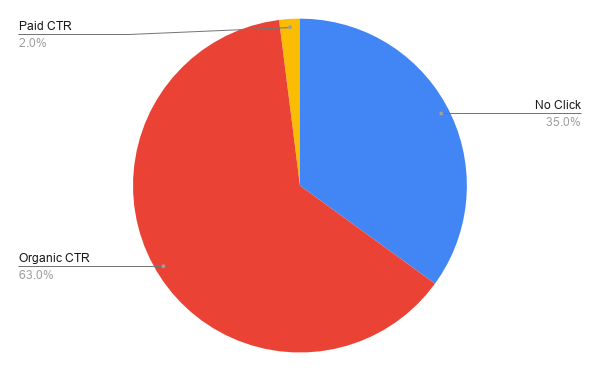Rise of semantic search.
A significant algorithm change by Google in 2013 was Hummingbird. Unlike the previous update which was as an add-on Hummingbird has been cited as a complete overhaul of the core algorithm.
The knowledge graph and semantic search
In order to know more about Hummingbird, let’s be familiar with the search engine feature it most heavily impacted: semantic search and knowledge graphic.
Before the release of Hummingbird, Google launched its knowledge graph which is a set of SERP features designed to provide quick, accurate answers to the user’s queries about people, places and other things.
You can see a knowledge graph in action on the result page yielded upon searching for “chocolate chip ice cream”. The SERP does contain standard organic results and links to suitable websites, it also contains a rich set of knowledge graph data, including an answer box with a recipe, a right-hand knowledge panel featuring a Wikipedia article and some popular searches.
How does Google determine that these results reflect the intent of the searcher and adequately address their needs? This is where semantic search comes in.
The result matches searchers’ intent rather than searchers’ language.
The objective is to understand “real-world entities and their relationship to one another”
Conversational search queries and increased presence of knowledge panels.
Some of the impacts of Hummingbird…
One of Hummingbird’s main purposes was to translate semantic search from a concept to reality — and one that would ultimately become the search standard. It sought to better approximate the true intent of searches so that, for a query like the south Indian food referenced above the users receive a set of the south Indian restaurants to choose from, rather than other relevant data.
Query length has gotten longer than previously. Searchers tend to use long-tail keywords for the searches rather than small one or two-word keywords.
Searchers are asking more and more questions because they know the results are getting more relevant to their queries.
Featured Snippet
2014: Hummingbird Most talk about trends featured snippet and ask box.
Search engines answer questions about things he knows authoritatively.
The featured snippet is not only the 1st result, it derives from any of the top 10 results.
Most of the time the first 3 results have a higher percentage to occur in the featured snippet.
Hummingbird and voice search
In retrospect, the Hummingbird update could be seen as a step on Google’s path toward mastery of the inevitable rise of voice search. When Hummingbird was released in 2013, “conversational search” was making waves in the SEO community. Fast-forward just a few years and the emergence of voice search obliges Google to be equipped to understand fully natural language, using the spoken word for searches like, “Where’s the cheapest place for Mexican food near me?” or “How can I fix a leaky kitchen faucet?”
In sum, a technology that is limited to understanding search language keyword-by-keyword isn’t up to the task of gauging intent. Developments like semantic search and updates like Hummingbird are designed to operate effectively in a world of natural language.
SEPR features have a dramatic impact on CTR “Click-Through Rate”
Goodbye click
On Mobile devices
On Desktop devices

How can I discover if I’ve been hit by Hummingbird?
While local business owners may have experienced some temporary problems with spammy one-boxes decreasing their local search engine visibility, it’s unlikely that most websites experienced negative impacts from this update.
If your website experienced a drop in traffic or rankings that you believe may have been tied to Hummingbird, definitely take a look at a complete list of Google updates. It may well turn out that the agent of change for your website was another update, such as Panda or Penguin.
With Hummingbird, it’s not about recovery — it’s about an opportunity!
Hummingbird signaled to all website owners that Google had its sights set on an increased understanding of the true intent behind users’ searches, looking at whole queries for context instead of treating them like strings of keywords.
The most practical application of this for website owners is to ensure that natural language is reflected in the site’s content. Hummingbird may be seen as bridging the gap between old, spammy practices and modern SEO which seeks to speak the natural language of readers, using their own words.
Websites that deftly identify and publish the answers to the public’s most popular queries can seek to become chosen by Google as relevant resources for particular topics. When your content is seen as matching searcher intent, there is an opportunity not only to rank well organically and locally but also to place in a SERP feature such as an answer box or knowledge panel. In today’s search engine results, serving the intent of the searcher should place high on your list of SEO priorities, and you’ll want to use a combination of direct interaction with your audience, keyword research, and topical research to help your website improve its visibility.
Search pages are comming more and more near to you.
Pay attention to
Featured Snippet for two big reason…
Mobile searches are becoming more and more prominent.
Feature snippet is a result delivered to voice queries.
- Question Format
- Short Answer
- Authoritative
- Algorithmically Generated








Pingback: How CPC is Different from SEO - Design Digital
Pingback: 7 Essential Keyword Research Tools for Digital Marketing 2020 - Design Digital